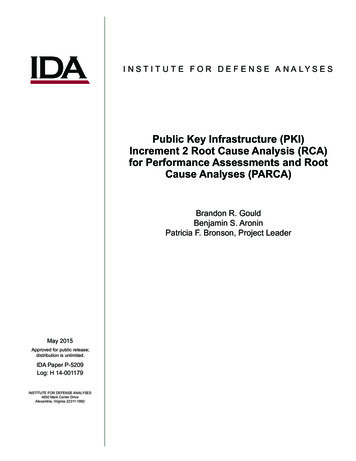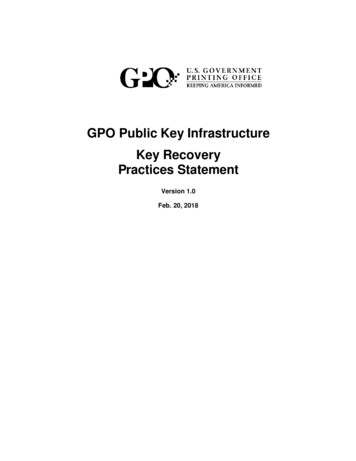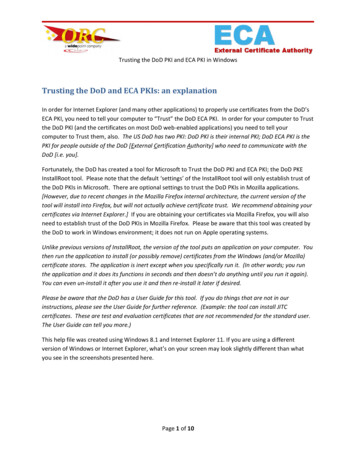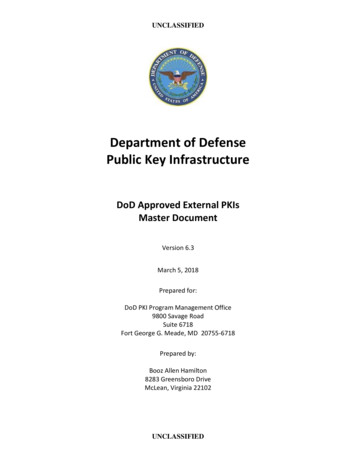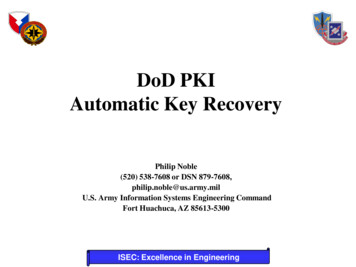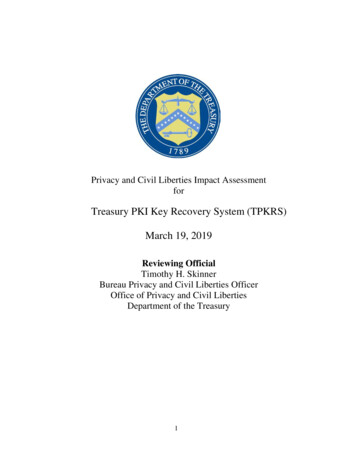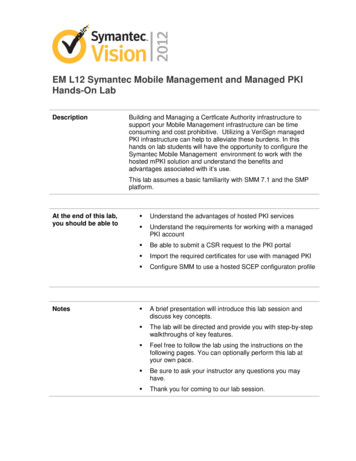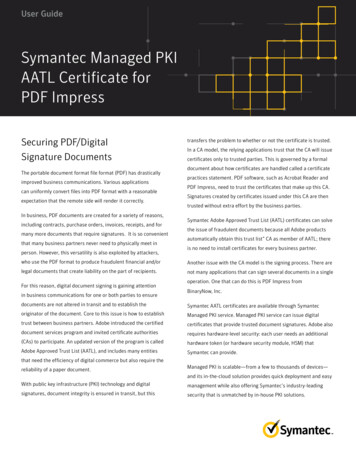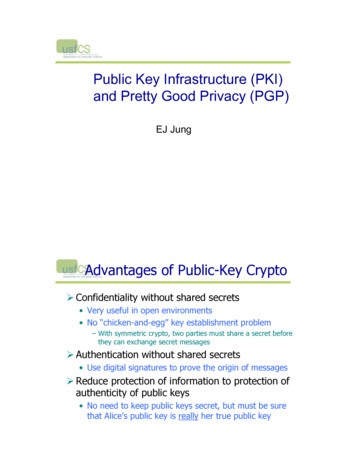
Transcription
Public Key Infrastructure (PKI)and Pretty Good Privacy (PGP)EJ JungAdvantages of Public-Key Crypto! Confidentiality without shared secrets Very useful in open environments No “chicken-and-egg” key establishment problem– With symmetric crypto, two parties must share a secret beforethey can exchange secret messages! Authentication without shared secrets Use digital signatures to prove the origin of messages! Reduce protection of information to protection ofauthenticity of public keys No need to keep public keys secret, but must be surethat Alice’s public key is really her true public key
Disadvantages of Public-Key Crypto! Calculations are 2-3 orders of magnitude slower Modular exponentiation is an expensive computation Typical usage: use public-key cryptography to establisha shared secret, then switch to symmetric crypto– We’ll see this in IPSec and SSL! Keys are longer 1024 bits (RSA) rather than 128 bits (AES)! Relies on unproven number-theoretic assumptions What if factoring is easy?– Factoring is believed to be neither P, nor NP-completeEncryption using Public-KeysystemHenric Johnson4
Authentication using PublicKey SystemHenric Johnson5Authenticity of Public KeysBob’skey?private keyAliceBobpublic keyProblem: How does Alice know that the public keyshe received is really Bob’s public key?
Distribution of Public Keys! Public announcement or public directory Risks: forgery and tampering! Public-key certificate Signed statement specifying the key and identity– sigAlice(“Bob”, PKB)! Common approach: certificate authority (CA) Single agency responsible for certifying public keys After generating a private/public key pair, user proveshis identity and knowledge of the private key to obtainCA’s certificate for the public key (offline) Every computer is pre-configured with CA’s public keyUsing Public-Key CertificatesAuthenticity of public keys is reduced toauthenticity of one key (CA’s public key)
Typical Digital SignatureApproachHenric JohnsonHierarchical Approach! Single CA certifying every public key is impractical! Instead, use a trusted root authority For example, Verisign Everybody must know the public key for verifying rootauthority’s signatures! Root authority signs certificates for lower-levelauthorities, lower-level authorities sign certificatesfor individual networks, and so on Instead of a single certificate, use a certificate chain– sigVerisign(“UI”, PKUI), sigUI(“EJ Jung”, PKE) What happens if root authority is ever compromised?9
Revocation of Certificates! Reasons for revocation: The users secret key is assumed to be compromised. The user is no longer certified by this CA. The CA’s certificate is assumed to be compromised.Henric Johnson11X.509 CA HierarchyHenric Johnson12
Alternative: “Web of Trust”! Used in PGP (Pretty Good Privacy)! Instead of a single root certificate authority, eachperson has a set of keys they “trust” If public-key certificate is signed by one of the “trusted”keys, the public key contained in it will be deemed valid! Trust can be transitive Can use certified keys for further certificationI trustAlicesigAlice(“Friend”, Friend’s key)sigFriend(“FoaF”, FoaF’s key)AliceFriend of AliceFriend of friendBob
Typical Digital Signature Approach Hierarchical Approach!Single CA certifying every public key is impractical!Instead, use a trusted root authority For example, Verisign Everybody must know the public key for verifying root authority’s sig
